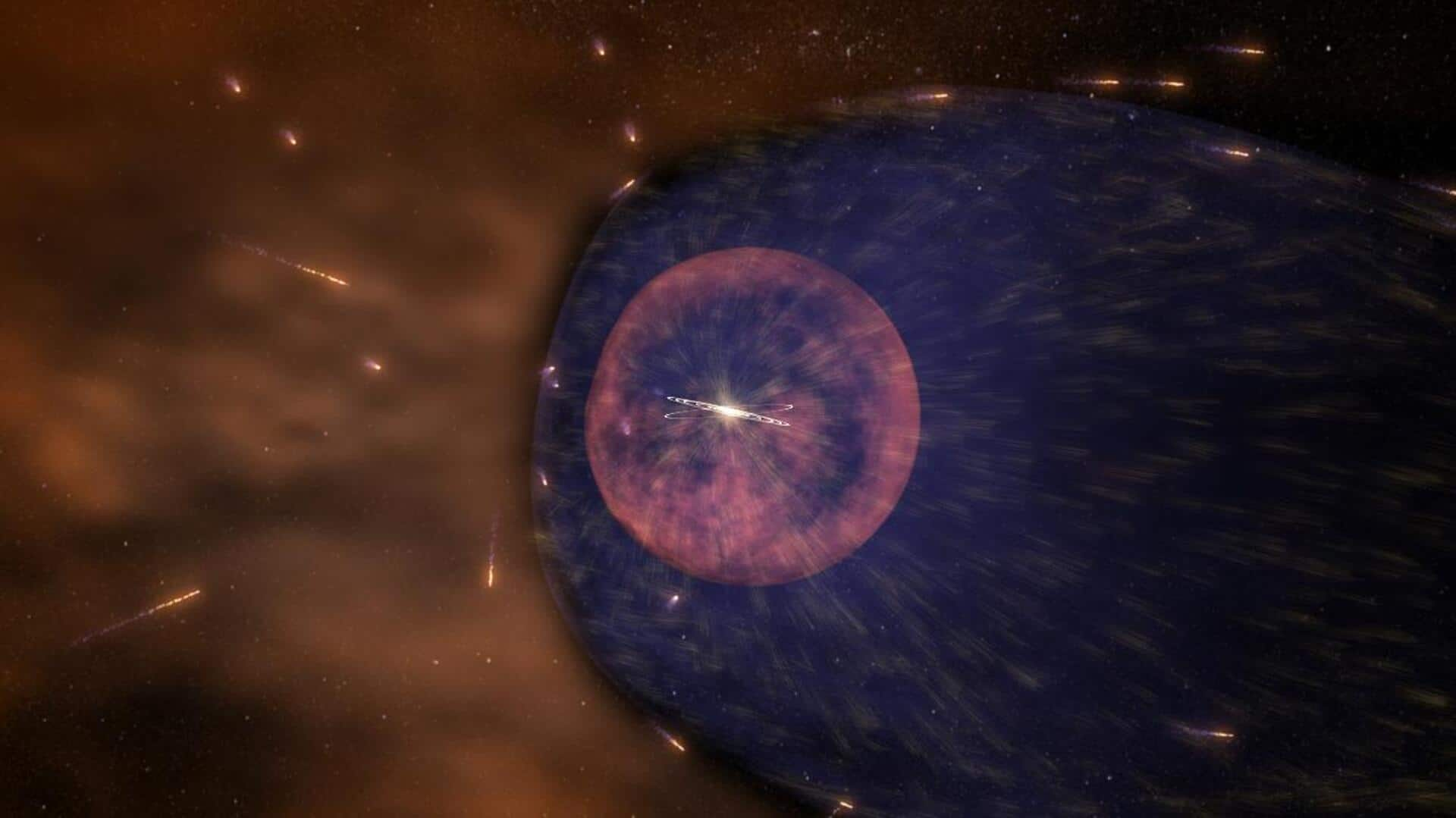
How NASA aims to study solar system's cosmic shield
What's the story
NASA is working on a new mission that will provide insights into the protective magnetic bubble surrounding our solar system, called the heliosphere. This layer acts as a shield that protects the planets from interstellar radiation. Dubbed Interstellar Mapping and Acceleration Probe (IMAP), the spacecraft will launch in May 2025. The mission will be positioned about 1.5 million kilometers from Earth to collect and study the particles that make it through the heliosphere.
Working
IMAP will function as a modern-day cartographer
IMAP will serve as a 'modern-day cartographer,' says NASA. The mission will shed light on what happens when the solar wind, which refers to a constant stream of particles from the Sun, collides with materials from interstellar space. This mission will help map the boundary of the heliosphere and better understand how this magnetic bubble protects Earth from large amounts of harmful cosmic radiation. Post-launch, the spacecraft will fly to the Earth-Sun L1 Lagrange point to commence observations.
Details
It will build on findings from NASA's Voyager spacecraft
A study in 2020 indicated that the heliosphere may have the shape of a deflated croissant as opposed to a long-tailed comet shape that another research suggested. The mission will build on the findings from NASA's two Voyager spacecraft and the Interstellar Boundary Explorer (IBEX). The IBEX was a small NASA satellite that aimed to map the boundary of the solar system.
Instruments
The mission will be equipped with 10 instruments
Recently, the IMAP mission reached a significant milestone, allowing it to advance from development and design to assembly, testing, and integration. The spacecraft is currently being assembled at Johns Hopkins Applied Physics Lab in Maryland. Over the next few months, engineers will install electronics, communications systems, thermal systems, propulsion, batteries, and the required hardware. All 10 of IMAP's instruments will soon start arriving from around the world and be integrated with the spacecraft.
Testing
You can track the mission's development in real-time
IMAP will undergo the final testing at NASA's Goddard Space Flight Center before take off. Originally the mission was supposed to launch in April 2025. However, the launch was pushed to May 2025 to "address risks and technical complexities during system integration and testing," per NASA. IMAP's target location, the L1 point, is the same place where ISRO's Aditya-L1 mission will also be positioned. There's a live, 24-hour feed on YouTube where you can track the mission's progress in real-time.